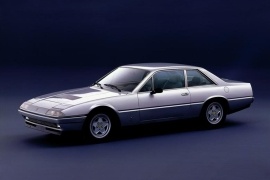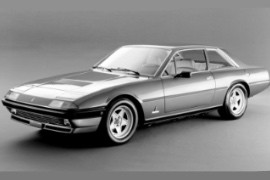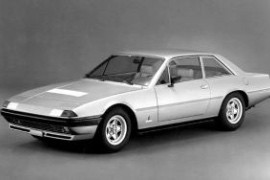FERRARI 400 Models/Series Timeline, Specifications & Photos
First production year: 1976
Engines: Gasoline
Body style: Coupé (two-door)
The Ferrari 412 relied on the 400 which was a continuation of the 1972 model 365 GT4 2+2. It was constantly updated and it was the longest-ever car ever built by the Italian car-maker.
The initial design was made by Leonardo Fioravanti while he was working at the Pininfarina Studio. The simple lines it draws for the car made the 365 model a timeless machine. When it was updated to the 400 model, not many things were made on the outside. Some restyling was made for the 1985 Ferrari 412, which was unveiled at the Geneva Motor Show.
The main visual difference was at the bumpers, which were made from plastic and in body color. The door mirror was larger and rectangular. In the back, the 412 featured a revised rear quarter panel that produced a less pronounced slope to the tail. The trunk lid was raised, adding more room for the luggage.
The interior was focused around the driver, with a high center console. Since the car featured a transaxle construction, with the engine in the front and the gearbox in the back, the center tunnel was high and formed a clear 2+2 cabin configuration. The instrument cluster featured four round dials and three other gauges installed above the stereo system on the center stack.
The 412 featured the same engine from the 400i (with Bosch fuel injection) enlarged to 5.0-liter displacement. Following the Ferrari tradition, the name of the vehicle was given by the displacement of a cylinder, which was of 412 cc (25.14 cu.in). Like its predecessors, the 412 was fitted with a 5-speed manual or with an option for 3-speed automatic supplied by GM. Only 576 Ferrari 412 were produced between 1985 and 1989. The car was withdrawn from the production line one year after Enzo Ferrari passed away.
As emission regulation got stricter, in 1979, the Ferrari 400 got an updated engine. Instead of the 6 carburettors, the V12 received a Bosch K-Jetronic fuel injection system.
This meant a greater improvement regarding emissions but it took the power down from 340 HP to 310 HP.
The later models featured different camshaft profiles and exhaust headers, thus the car got 5 extra HP.
The car featured a 4.8-liter V12 engine that was able to rocket the car to 100 km/h in 8.2 seconds. The engine boasted 311 hp and had a maximum torque of 412 nM. The power was delivered to the wheels through a 3-speed automatic gearbox. The official top speed was rated at 235 km/h.
While the exterior suffered minimal visual changes, like the “i” badge on the tail, the interior was refreshed and got a new upholstery, along with new door panels and an electronic switchgear.
The model retained the standard 5-speed manual (400i GT) and the optional 3-speed automatic gearbox (400i Automatic) or a 5-speed manual transmission. A total of 1,305 units were made.
Due to the America’s smog and safety regulations, the 400i never made it onto their market.
The 400i was replaced in 1985 by the Ferrari 412, with minor changes to the exterior and a slightly bigger engine, a 4.9-liter developing 340 hp.
An updated version of the 365 GT4 2+2 came by 1976 by the name of the Ferrari 400. As with the model it replaces, the name refers to the swept volume of a single cylinder.
To visually differentiate the 400 from the 365 GT4, the first comes with a body-colored chin spoiler, five-bolt fixed rims, paired circular stoplights and the deletion of the emblem from the radiator grille. The interior got more sumptuous, with better seat upholstery, different stitching, patterns and slightly changed switchgear. Leather trim and power seats were also available.
The underpinnings of the 400 are almost identical to the 365 GT4 2+2. The car was available in two forms: the 400 Automatic, which was also the first Ferrari with an automatic transmission (Borg-Warner 3-speed automatic), and the 400 GT, coming with a 5-speed manual box. 70% of the customers preferred the automatic gearbox.
The Tipo engine was upgraded to a bigger one and got an extra 20 bhp, the 4.8-liter V12 powerplant producing 340 bhp.
The Ferrari 400 had a top speed of 149 mph and reached 60 mph in around 8 seconds. A total of 502 units were built - 355 automatics and 147 manuals. No US versions were made.
In 1979 the 400 was updated and got a fuel injection system, the model being named Ferrari 400i.


